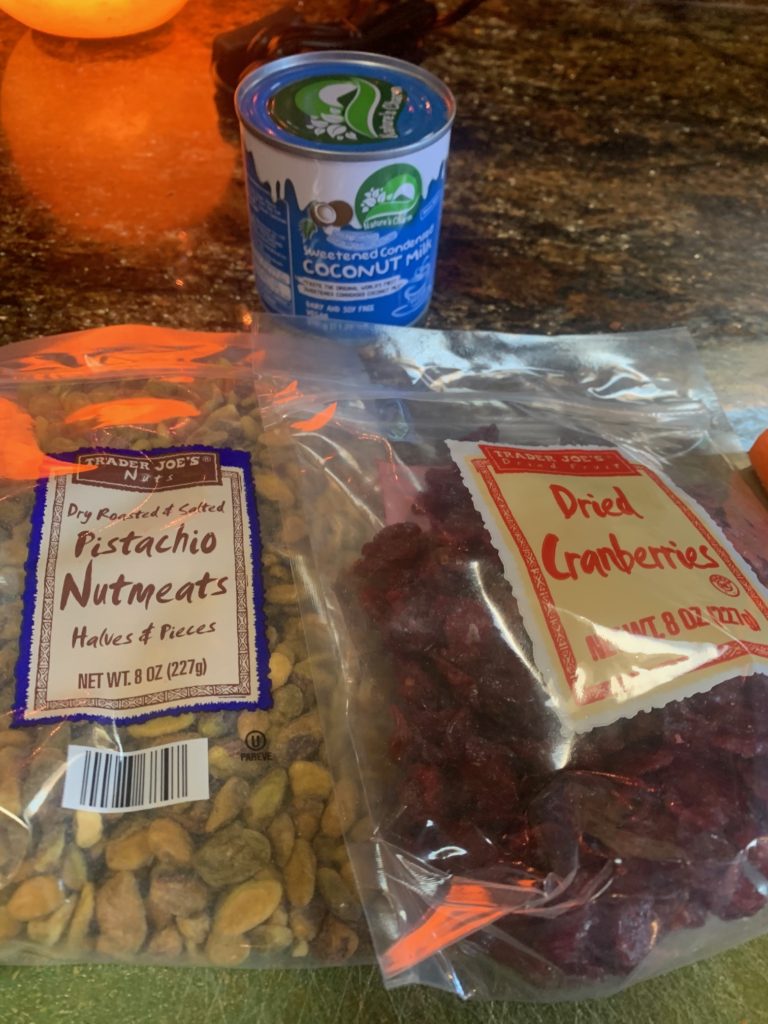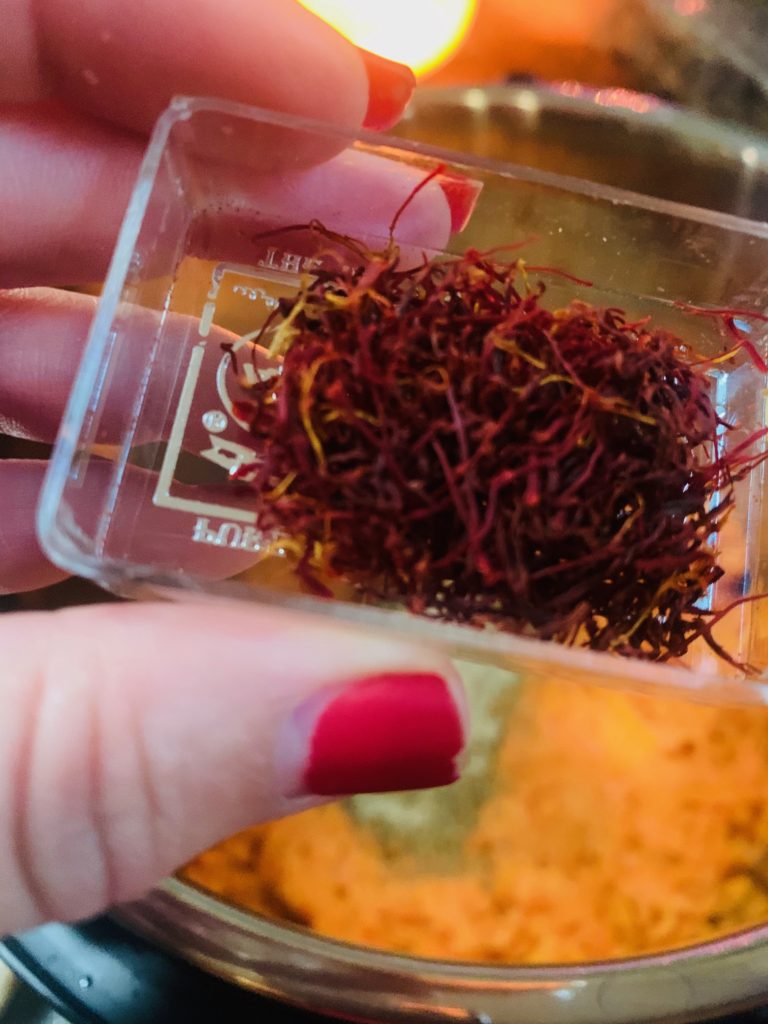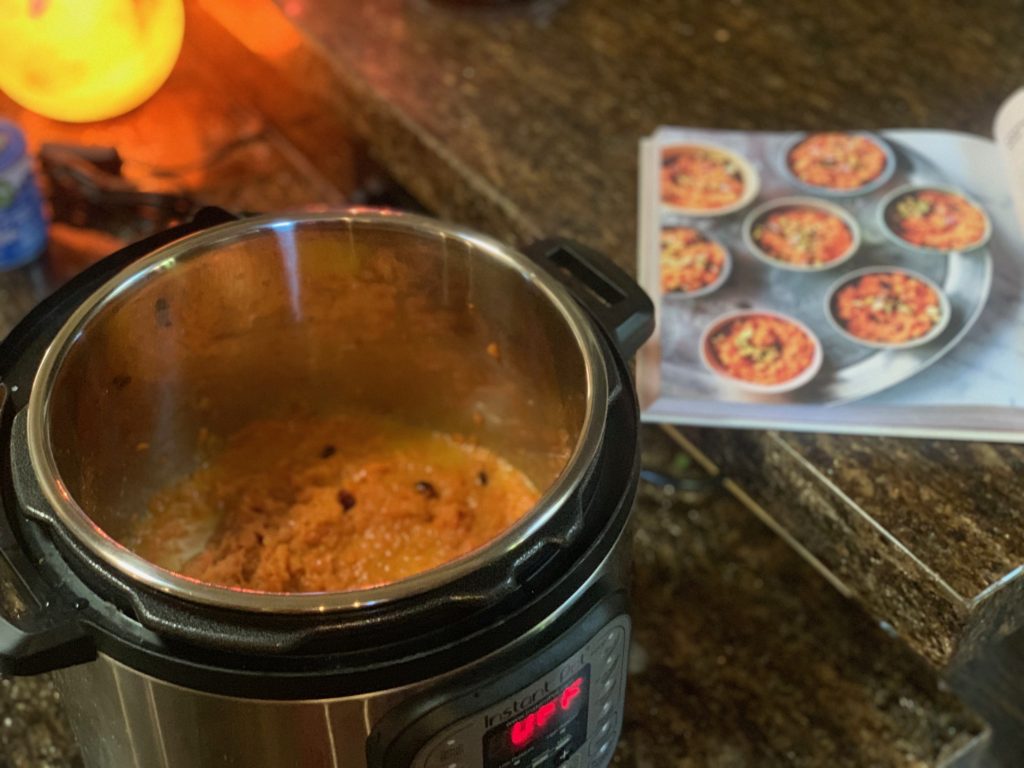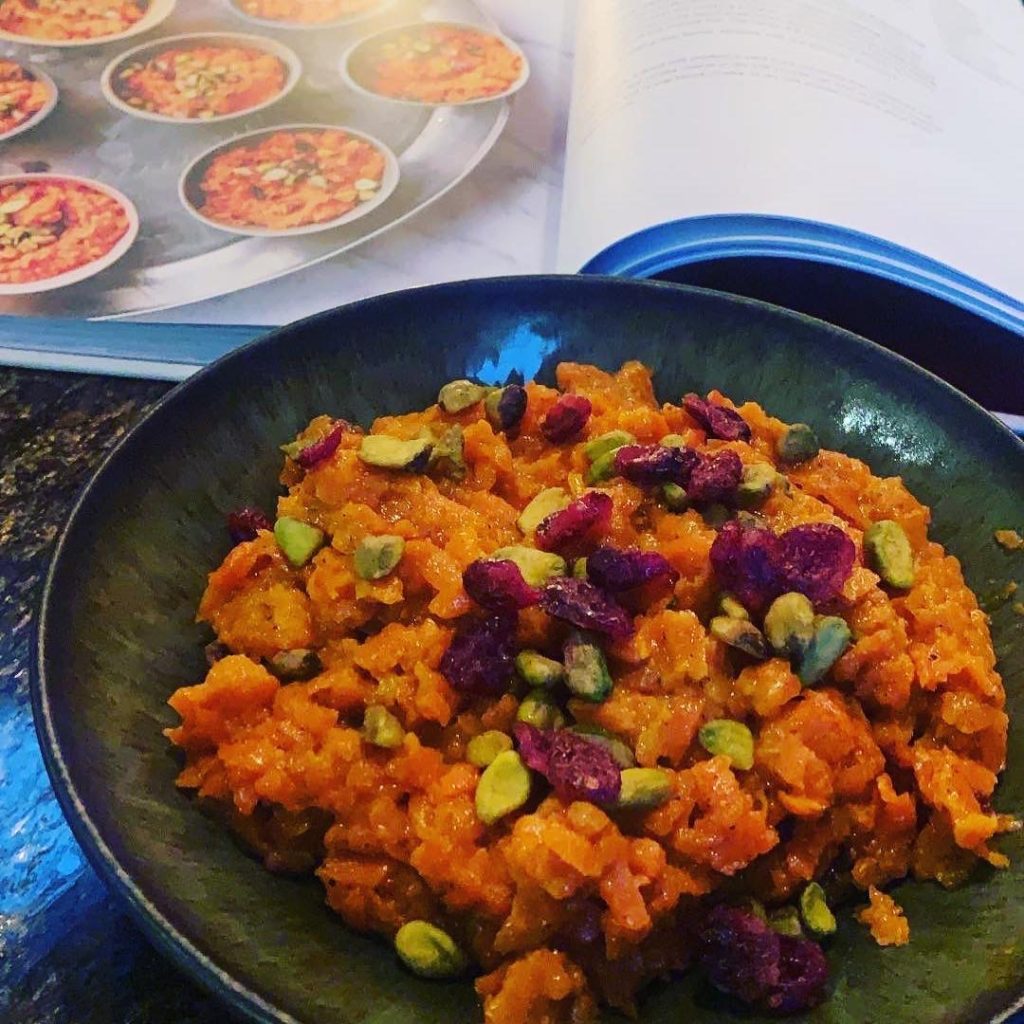This Christmas I received a cook book that has finally helped me overcome my inhibitions of using my InstaPot – a device I was gifted by my sweet husband last (yes, last) Christmas. While I’ve experimented a bit with my Instapot, its been a learning process, especially to create some of the curry dishes that I’m trying to master. Each time I considered using this intense powerhouse of an appliance, my mind would conjure up childhood memories of curling into a corner upon hearing the atomic boom of my mom’s pressure cooker’s whistle.

Garnished Carrot Pudding
Apparently, after some considerable research my husband had decided that the most suitable cook book for me would be “The Essential Indian Instant Pot Cookbook” by the talented Archana Mundhe. Little did he know that I am already a fan of Chef Archana of Ministry of Curry. And I was delighted to see the carrot pudding (also known as Gajar ka Halva) recipe in her book.
As with many Indian dishes, this dessert dish holds considerable Ayuvedic nutritional value. The carrots are a major source antioxidants. Per ancient ayuvedic tradition both of the the spices (cardamom and saffron) included in this dish are tridoshic (good for balancing all three doshas). Cardamom holds benefits for digestion, reducing bloating, and it happens to be an excellent means for balancing Kapha, particularly in the stomach and the lugs. Where as saffron holds anti-inflammatory and anti-microbial properties.
In my brief years in India, I fondly enjoyed my mom’s version of this class Indian dessert. She would often make it on my birthday. Like many recipes that I can not collect directly from her, this is one I held close to my heart, longing to recreate one day.
So in tribute of my beloved guru’s (Parmahansa Yogananda) birthday, and Self Realization Fellowship’s 100 Centennial Year Celebration, I decided to make this dish.
I modified this dish ever so slightly to suite my client Samantha’s dietary needs by making it lactose free. I also adjusted one of the garnishes, and used dried cranberries instead of raisins based on my personal preference.
The details of Chef Archana’s recipe can be found in her book, however below I document my slightly altered version of the original recipe create.
Ingredients
- 10 carrots (about 6 cups), peeled and grated
- 1/2 cup almond or coconut milk (original recipe uses low-fat milk)
- 2 tbs ghee
- 3/4 cup coconut condensed milk (original recipe uses condensed milk)
- 2 tsp ground cardamom
- 2 tablespoons dried cranberries (original recipe uses raisins)
- 1/2 tsp saffron
- 2 tbs roasted & salted pistachios (or you can used sliced almonds)



The Process
- Combine the carrots, coconut milk, and ghee in the Insta Pot.
- Secure the lid and set the Pressure Release to Sealing. Select the Pressure Cook or Manual setting and set the cooking time for 8 minutes at high pressure.
- Perform a quick release by moving the Pressure Release to Venting. Open the pot and stir in the coconut condensed milk, cardamom, dried cranberries, and saffron.
- Press the Cancel button to reset the cooking program, then select the high Sauté setting and cook until most of the liquid evaporates, about 5 minutes.
- Press the Cancel button to turn off the Instant Pot.
- The pudding will continue to thicken as it cools.
- Garnish each individual serving with the pistachios and dried cranberries.

The results were a burst of beautiful flavors, and aesthetically very pleasing as well. My entire family absolutely enjoyed this dessert, especially my dad who loves traditional Indian desserts.
Kudos to Chef Archana for creating this easy to follow Instant Pot version of this recipe.